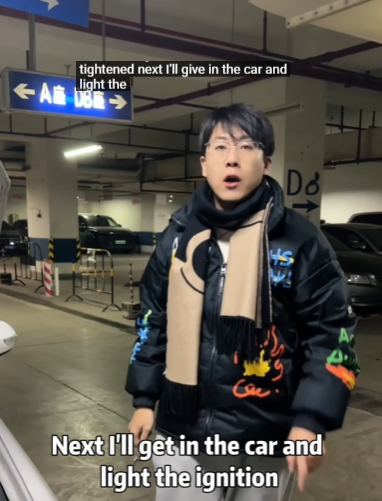
When your car’s dashboard lights up with a scary-looking warning light—often known as the “check engine” light or “trouble light”—it can feel like a wallet-draining emergency. Most drivers immediately assume the worst: an expensive repair, a trip to the mechanic, or hours at the auto shop. But here’s some good news: not all trouble lights mean costly problems. In fact, many issues that trigger this light can be fixed at home, without spending a single cent.
Understanding the Trouble Light
The trouble light, also known as the malfunction indicator lamp (MIL), is part of your car’s onboard diagnostics system (OBD-II). When it detects something out of the ordinary in the engine, emissions system, or powertrain, it lights up. But it doesn’t always mean a major failure. Sometimes, the cause is something as simple as a loose gas cap.
This light typically shows as an engine icon, and it may blink or stay solid depending on the issue. A blinking light indicates a more serious issue (such as a misfire), while a steady light usually means the problem is less urgent.
Let’s explore the most common reasons the trouble light comes on—and how you can potentially fix them for free.
1. Loose or Faulty Gas Cap
This is by far the most common and overlooked reason for a trouble light.
Why it happens: When your gas cap is not properly tightened or is cracked, it allows fuel vapors to leak from the tank. This disrupts the fuel system pressure and can trigger the emissions sensor.
The free fix:
- Open your gas tank door and remove the cap.
- Inspect it for any cracks or wear.
- Screw it back on tightly until you hear a few clicks.
- Drive for a day or two. If the problem was the gas cap, the light may turn off on its own.
Bonus tip: If the cap is damaged, many auto parts stores will check your trouble code for free and might even give you a temporary cap if you ask nicely.

2. Low Battery Voltage or Temporary Glitch
Sometimes, the light comes on after a battery change, a jump start, or even from cold weather messing with sensors.
Why it happens: Sudden voltage changes or sensor communication interruptions can confuse the computer.
The free fix:
- Disconnect the battery for 10–15 minutes. This will reset the car’s computer.
- Reconnect the battery and start the engine.
- If the light is off and doesn’t come back, it was likely just a glitch.
Warning: This might erase radio settings and trip meters, so make note of anything important first.
3. Dirty or Loose Sensor Connections
Over time, sensors and their connectors under the hood can get dirty, loose, or corroded. These sensors (like oxygen or mass airflow sensors) help the engine run efficiently.
Why it happens: Moisture, dust, or vibration can interrupt communication between sensors and the computer.
The free fix:
- Turn off the engine and let it cool.
- Open the hood and locate major sensors (especially around the air filter and exhaust system).
- Carefully check connectors and wires.
- Gently unplug and plug them back in to ensure a tight fit.
- Lightly brush off any dirt or debris.
Be careful not to force anything or damage the plugs. If you’re unsure, watch a quick YouTube video for your specific car model.

4. Air Filter Clog or Air Intake Blockage
Your engine needs clean air to run well. If the air filter is clogged or something is blocking the air intake, the sensors may think there’s a more serious problem.
Why it happens: Leaves, dust, or debris can get into the intake system.
The free fix:
- Open the air filter box (usually held by clips or screws).
- Take out the air filter and inspect it.
- Shake off dust or gently tap it to clean.
- If it’s not torn or soaked in oil, you can reuse it.
- Check inside the intake tube for any obstructions like leaves or paper.
If this was the cause, the trouble light may turn off after a short drive.
5. Use of Bad Fuel or Improper Refueling
If you’ve recently filled up your tank and the trouble light appears, it could be due to poor-quality fuel or overfilling the tank.
Why it happens: Water or contaminants in fuel can trigger sensors, or overfilling can damage the evaporative emissions system.
The free fix:
- Don’t top off the tank next time you refuel. Stop when the pump clicks.
- Run the fuel down and refill at a trusted station.
- Add no-cost fixes like taking the car on a longer highway drive to help burn off fuel residues and clear sensors.

6. Temporary Driving Habits or Conditions
Believe it or not, your driving style or environment can cause the light to come on.
Why it happens:
- Short trips in cold weather don’t allow the engine to reach full operating temperature, confusing sensors.
- Aggressive acceleration or high revving on a cold engine may also trip the system.
The free fix:
- Drive the car gently for a few days.
- Take it on a 20–30 minute steady-speed highway trip to allow sensors to re-calibrate.
Sometimes, all your car needs is a little “relearning” time under normal conditions.
7. Use a Free OBD-II Code Reader
Many auto parts stores like AutoZone, Advance Auto, or O’Reilly will plug in an OBD-II scanner for free. This tool reads the specific trouble code behind the light.
Why it helps:
- You get a better idea of what caused the warning.
- Sometimes it will confirm that the problem is very minor or already resolved.
If the issue is resolved, they can even clear the code for you on the spot.
Final Thoughts: Don’t Panic!
When that yellow or orange warning light appears, it’s easy to imagine expensive repairs. But before heading to a mechanic, take a deep breath. You now know that many trouble light issues are harmless and totally fixable at home—for free.
By checking simple things like your gas cap, air filter, or sensor connectors, you can avoid unnecessary stress and expenses. Just be mindful: if the light is blinking or the car is running roughly, it may be a more serious issue requiring professional help.
Still, in most cases, the fix is simple, painless, and free—just the way we like it.



